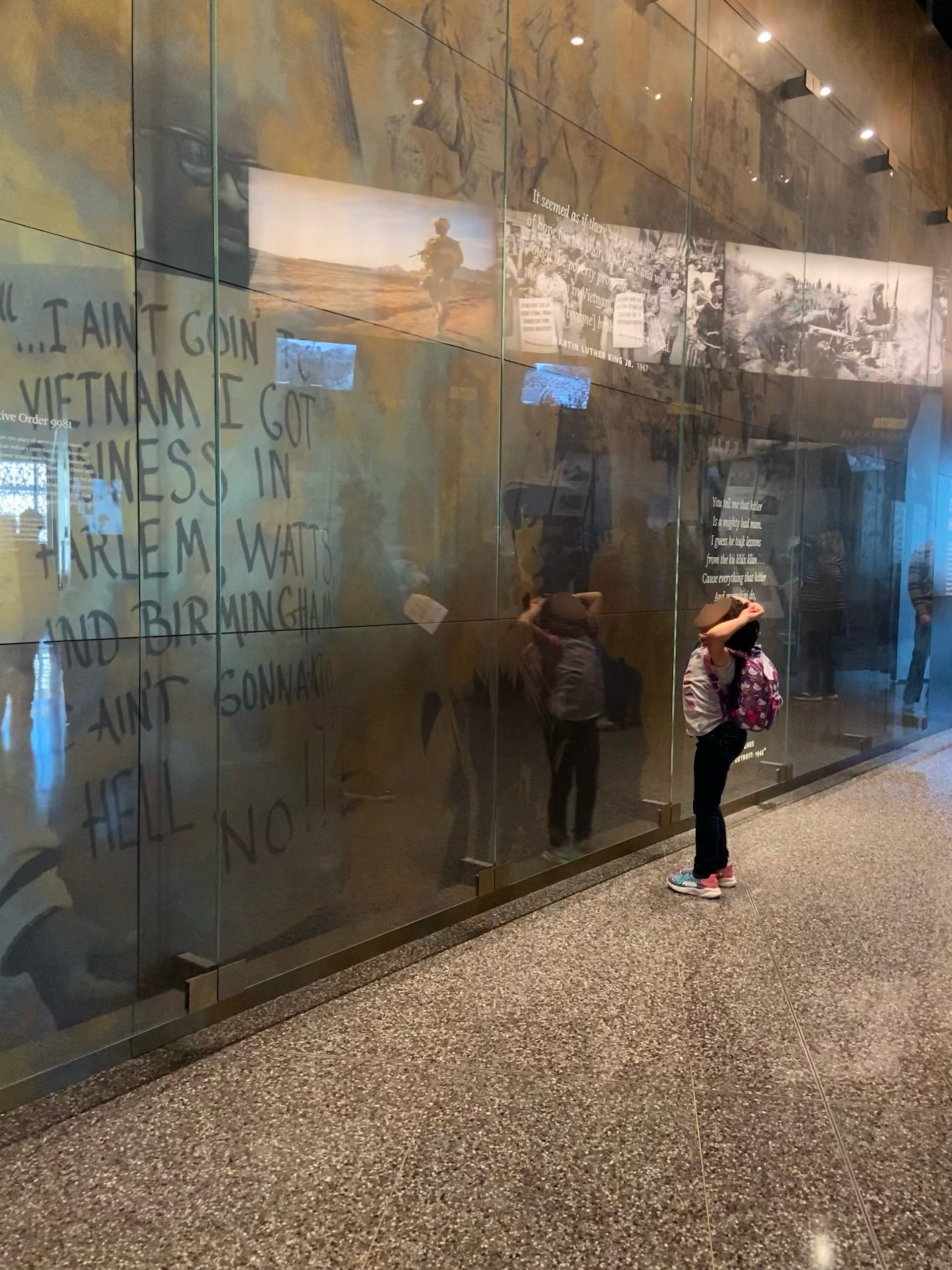
Introduction
Hi, my name is Emma Paige, and I am a sophomore early childhood/elementary education major. I found out about Rocking the World: Disrupting Stereotypical Notions of Race, Class, and Religion through my job in Klein College of Media and Communication when I met with Dana Saewitz, David Brown, Meghnaa Tallapragada, and Allie Miller to write a story about the upcoming class for Klein’s website.
After speaking with the four of them, I knew I had to take the course myself. I originally thought my digital artifact would come in the form of a follow-up story about my experience in the course, but I ultimately decided to go in a different direction.
Throughout our classes and trip to D.C., I heard many of my classmates express their feelings surrounding how concepts such as casteism and racism are/aren’t taught in schools. This reminded me of some of my coursework from last semester, where we read opinions that said that teachers and social studies curricula often underestimate what children are able to learn. As it is, typically students learn state history in fourth grade, United States history in fifth grade, and world history in sixth grade.
As an early childhood/elementary education major, when I graduate, I will be certified to teach preschool through fourth grade. So, I got thinking. What if instead of using my writing skills that I use in my job through Klein, I bring some of my education expertise to the assignment and create a lesson plan to teach casteism and racism to fourth graders at an age-appropriate level? This is in-line with the idea that younger students may be ready for such topics before they are typically taught in fifth and sixth grade. The following is what I have come up with.
Relevant Pennsylvania Standards for Social Studies Education for Fourth Grade
Below are some state standards that I selected that helped guide my lesson planning. While these do pertain to state, country, and world history, teachers often focus more on state history at this grade. I intend to bring in the country and world history with this lesson.
5.1.W.F Evaluate the role of nationalism in uniting and dividing citizens
5.2.4.B Describe the sources of conflict and disagreement and different ways conflict can be resolved
8.4.4.D Distinguish between conflict and cooperation among groups and organizations that impacted the development of the history of the world
Objectives
Students will be able to define the word “caste.”
Students will be able to understand the driving concepts behind caste systems.
Students will be able to describe instances of casteism in history.
Students will be able to discuss the effects caste systems have on people, communities, the country, or the world.
Materials
Chart paper
Marker
Computer with projector and projection screen or other way to present slides
Worksheets
Lesson
Below are slides that can be presented to a class with notes and key points to mention that aren’t necessarily on the slides. The material and timing can be adapted to fit the needs of students. The whole lesson with the writing prompt should take around 60 minutes.
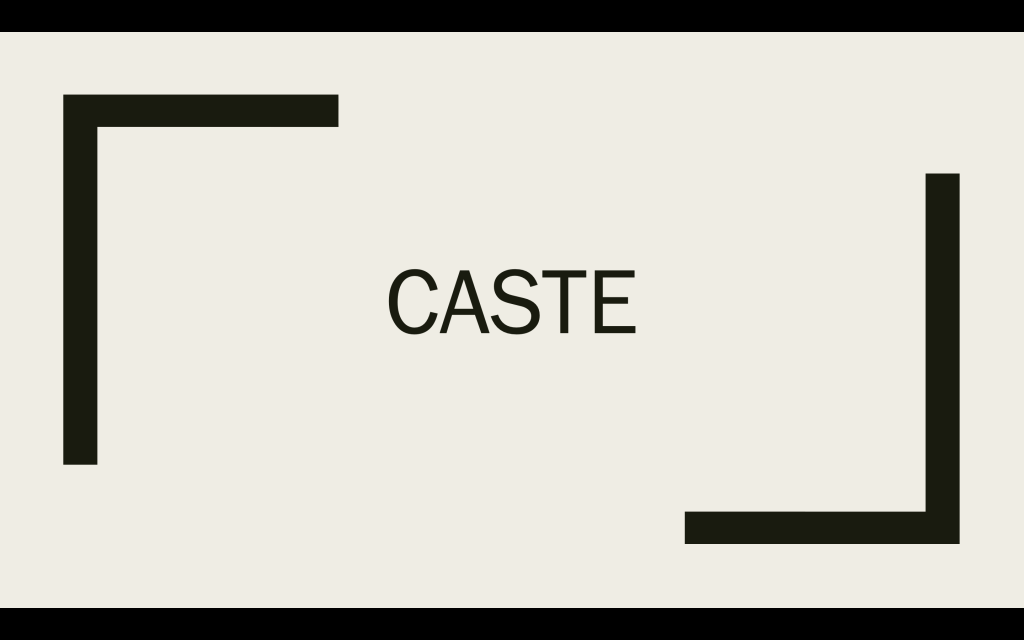
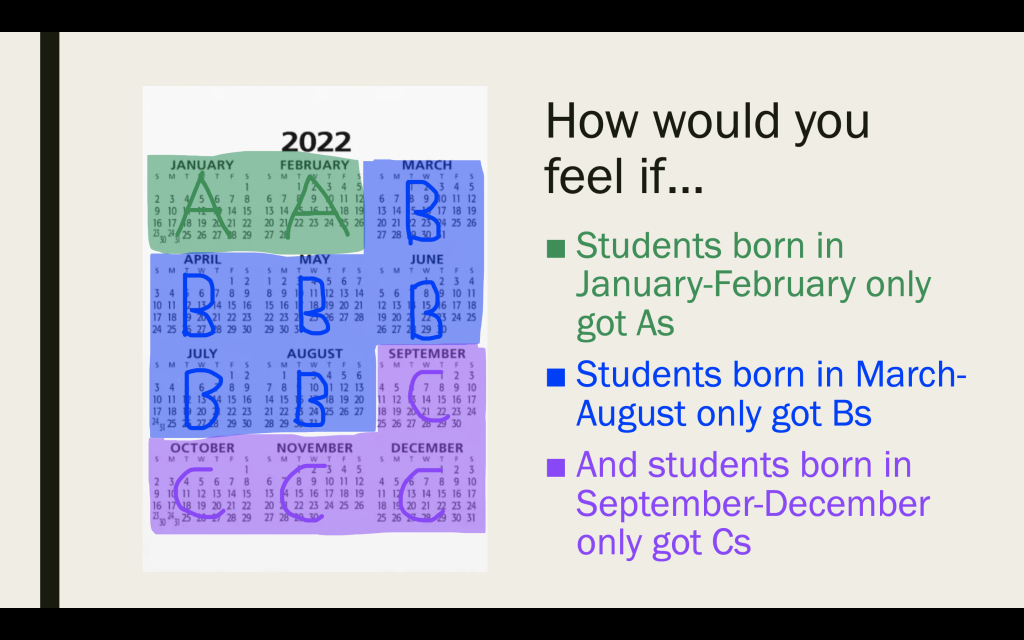
2 minutes
Call on students to gauge how they would feel
This is a quick activity to prime them for what if feels like to receive different treatment because of something you can’t control
This is similar to Jane Elliot’s blue eyes/brown eyes study, which you can find information on in the resources section
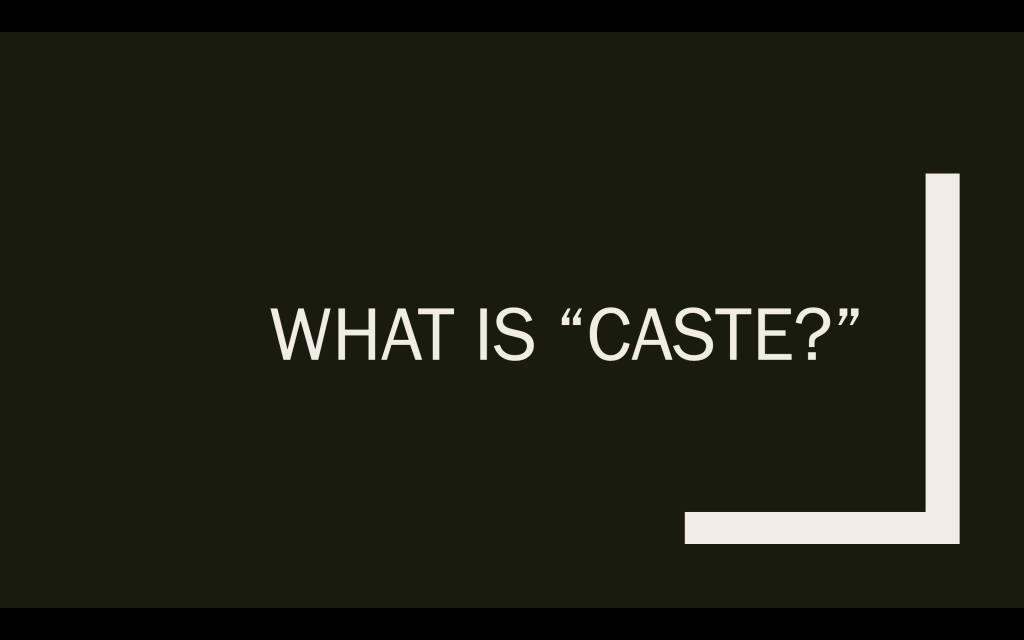
10 minutes
Discuss with students and write down answers on chart paper
Help guide them toward new definition
Things to note:
Cast of a theater production: performance, hidden by a curtain, roles, costumes
Cast for a broken bone: holds everything in place

After discussing the word and guiding students toward what it means in the context of the lesson, type out the definition you came up with together on this slide
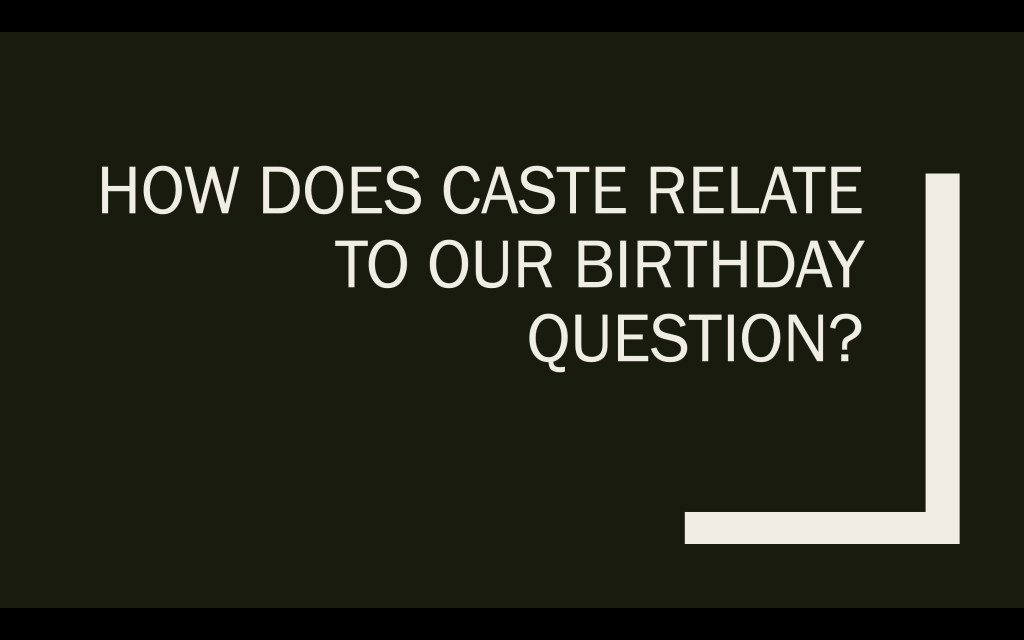
3 minutes
Things to note:
You can’t control it
Not equal number of people in each group
Created based on a random quality
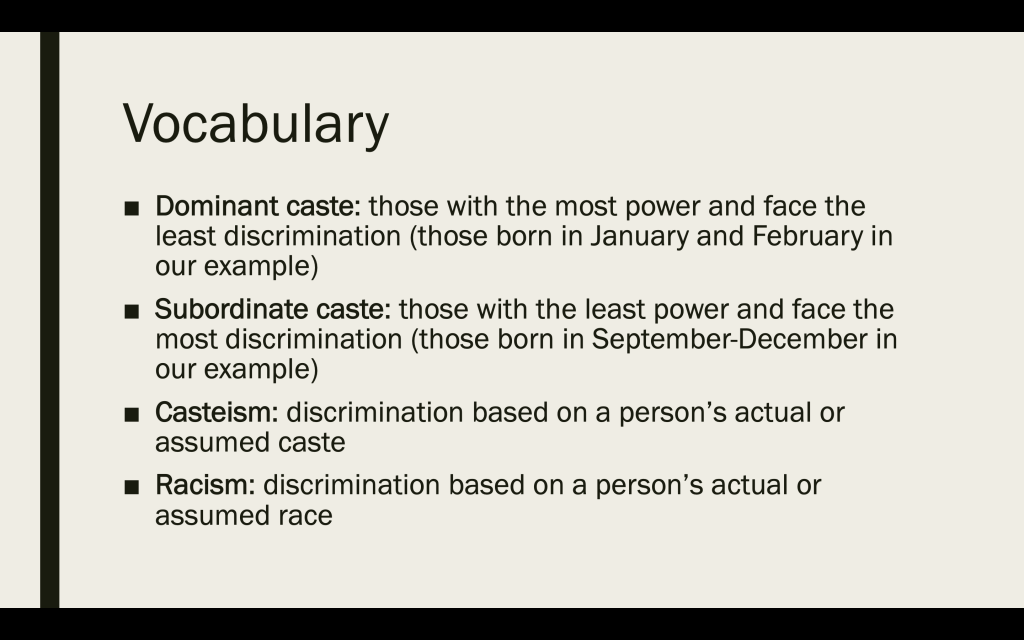
Go through vocabulary and check for understanding/allow for questions
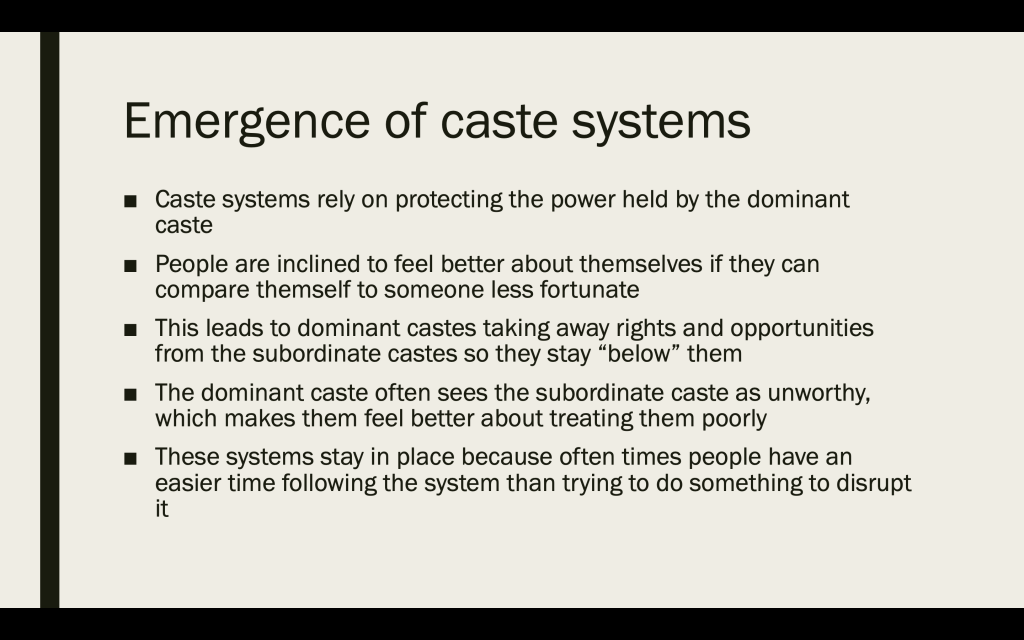
Standard: 5.2.4.B
Things to note:
Control of people
Serves an economic function
Obstacles to disrupting it such as deference to authority and the selfish motive to have people below you
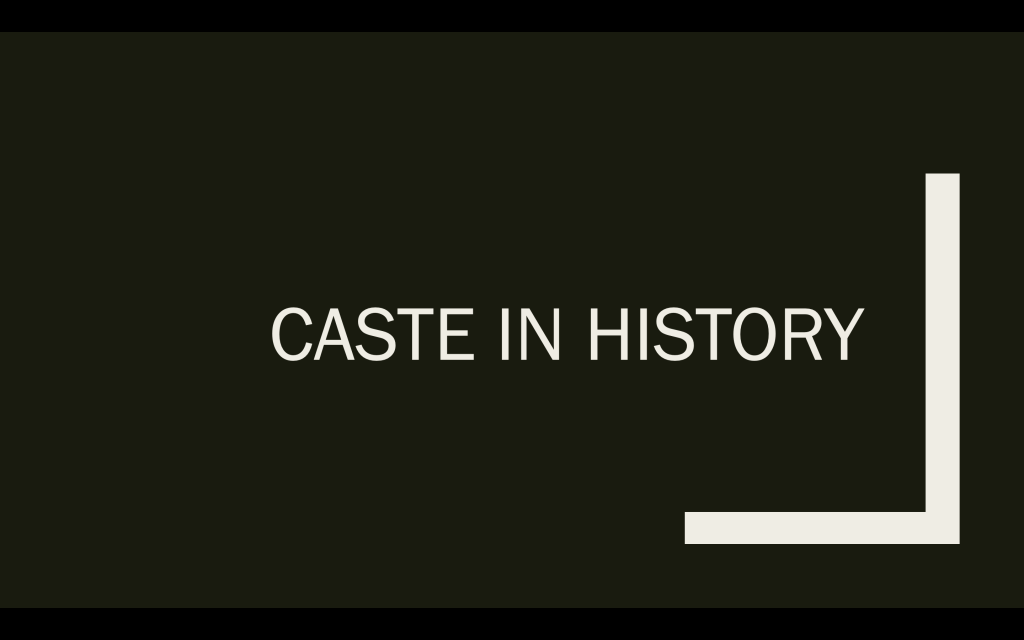
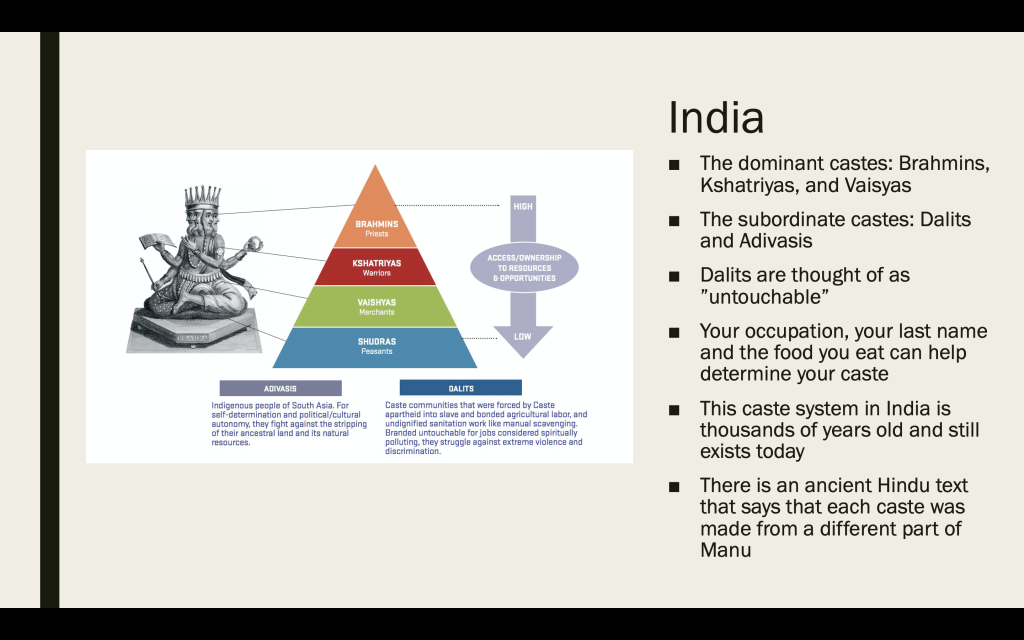
Standards: 5.2.4.B and 8.4.4.D
Things to note:
Divine justification
Subordinate castes aren’t even part of the caste system
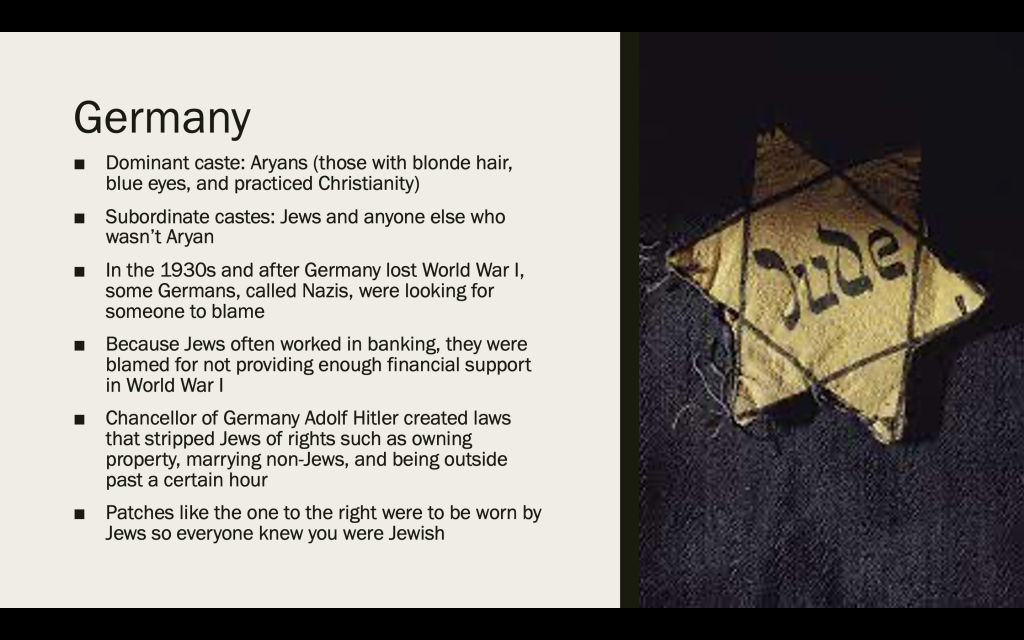
Standards: 5.1.W.F, 5.2.4.B, and 8.4.4.D
Focus on the ways it’s like India and America. They will eventually learn the gorier details, so there is no rush to do it now.
Things to note:
Use of Jews as a scapegoat
This system does not still exist there
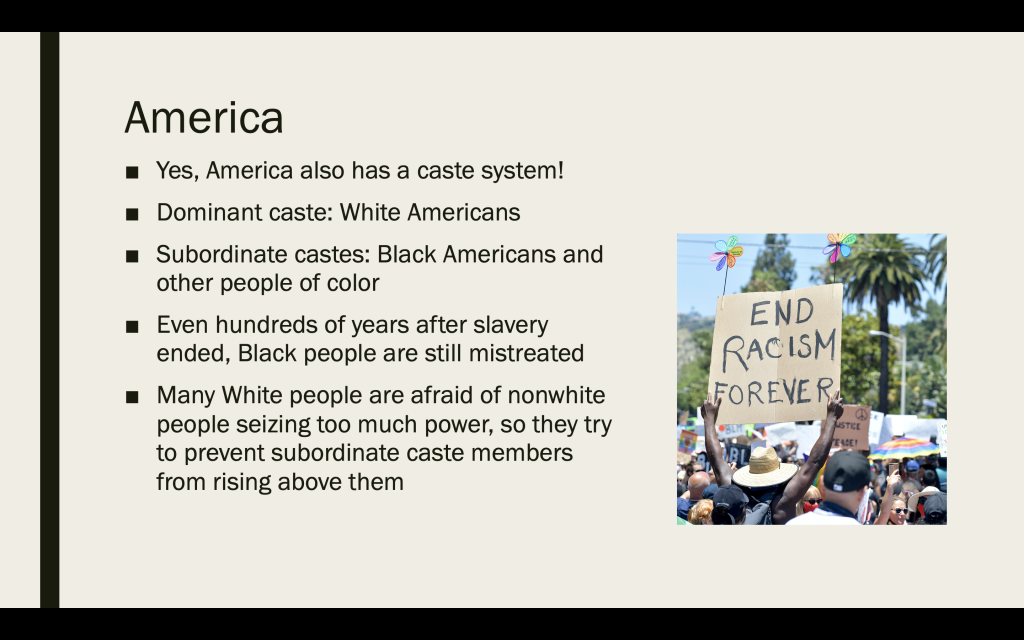
Standards: 5.1.W.F and 5.2.4.B
Note how the picture shows people of color gathering to stand up for themselves. You don’t need to go into police brutality because there are other forms of racism that are more age-appropriate to teach 4th graders such as education and housing discrimination.
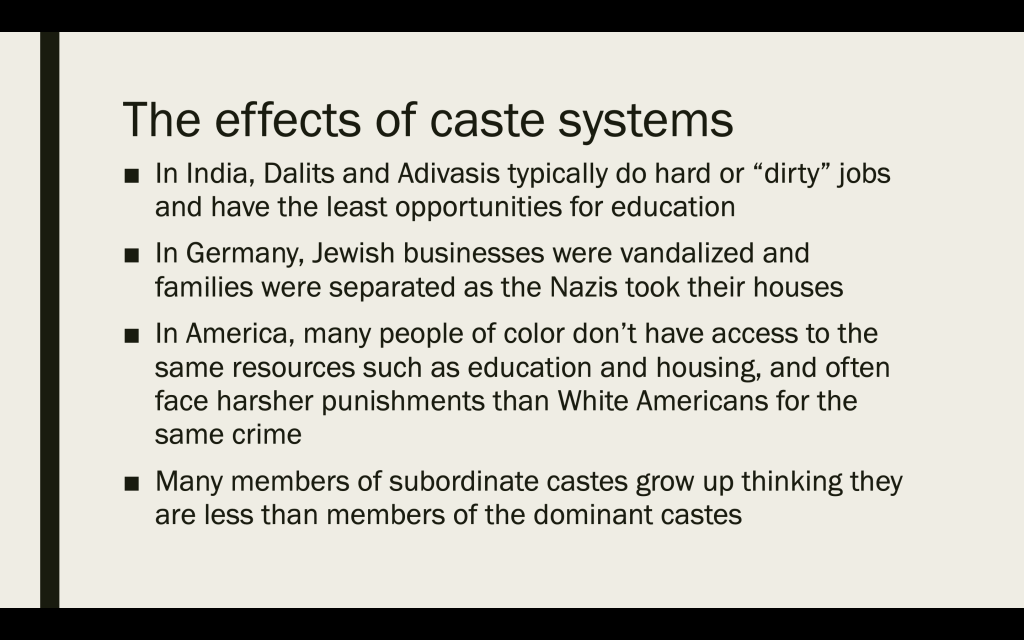
Standards: 8.4.4.D
Feel free to open this up to see if students have other ideas
Things to note:
There are more effects than just these
Caste systems effect both the dominant and subordinate castes
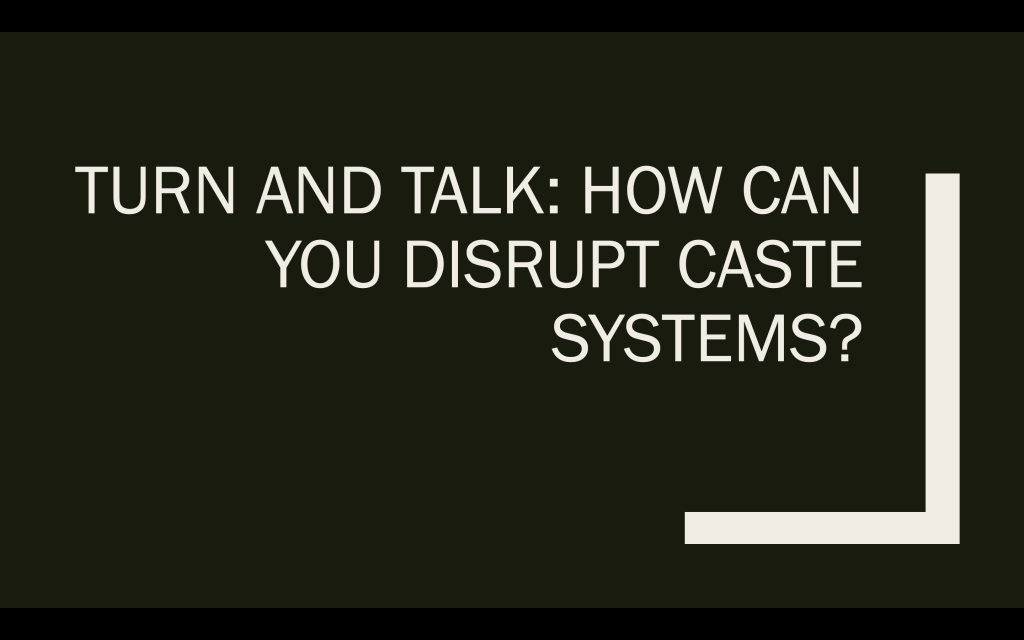
3 minutes
Listen in on student conversations. Option to engage in their conversations and mention any of the following:
The four Es: Educate, Engage, Empathy, Empower
People need to have more than one experience with a subordinate caste in order to address their prejudices
Uplift the voices of the subordinate castes
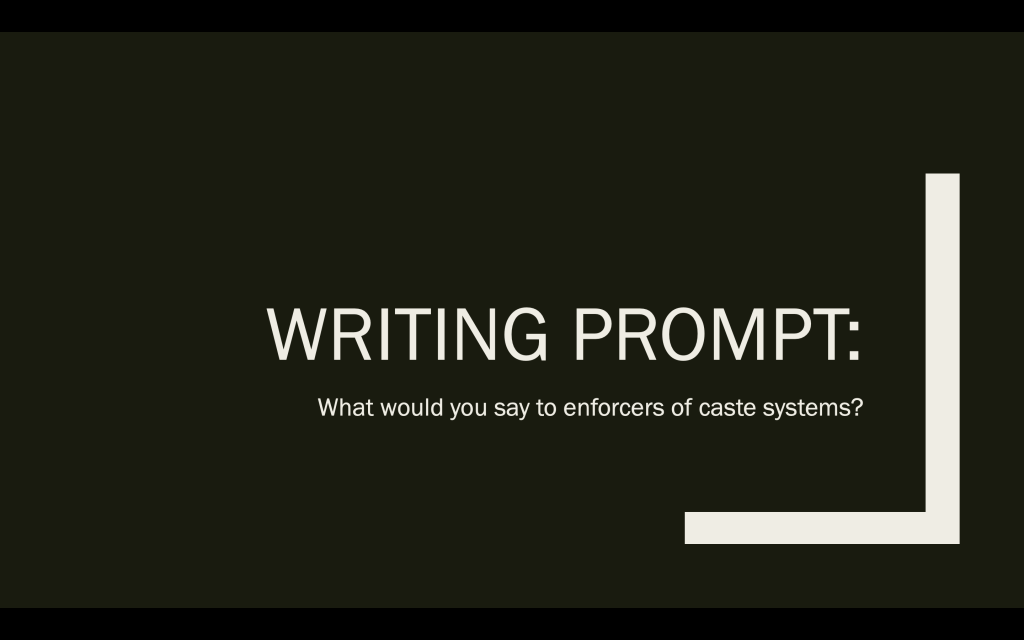
Assessment
The attached “assessment” is not meant to be graded. This lesson was designed to take about one class period and be an introduction to the concept. A formal and graded assessment would likely come after a few more days of discussion and learning. This open-ended prompt will get students thinking about being disruptors of the caste system and is also an opportunity to share any feelings about what they have just learned. You can also use it to gauge how they grasped the standards and if anything needs to be clarified. Allow 20 minutes to write.
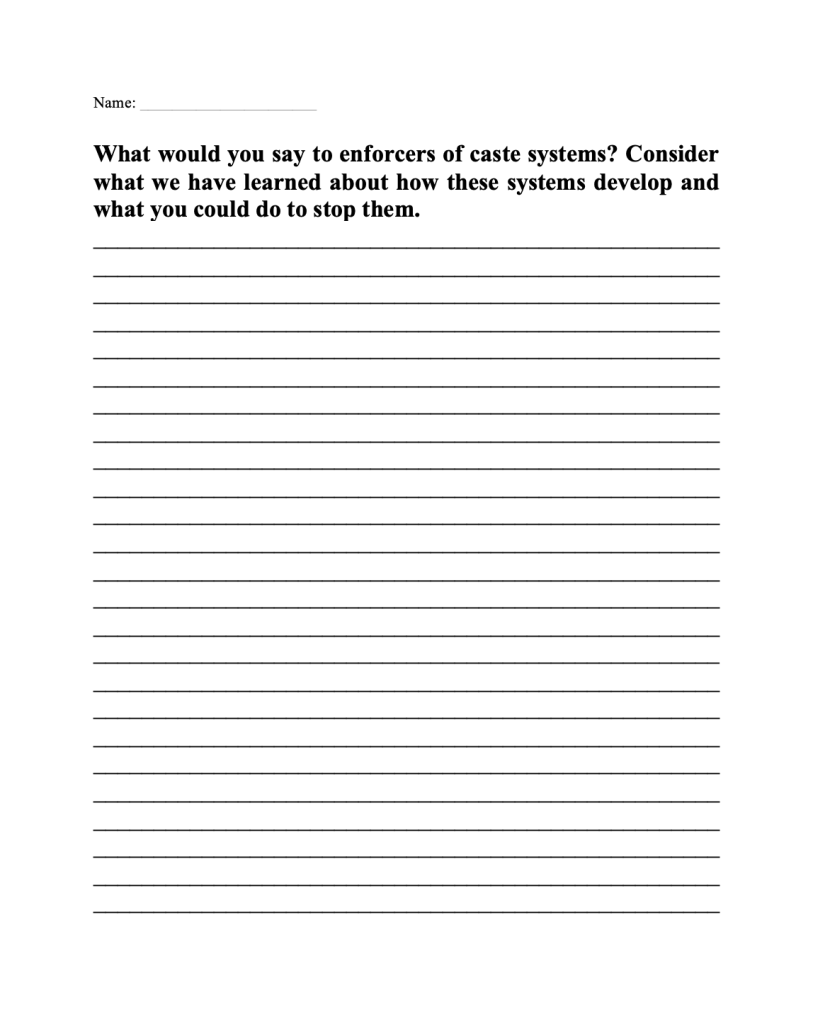
References
Below are some sources that guided me in my planning. First, a complete list of social studies standards for fourth grade social studies education. Second, more information on Jane Elliot’s work. And third, the book that guided our entire class and without which the course would not have been possible.
Pennsylvania Standards for Social Studies Education for Fourth Grade
https://www.pdesas.org/Standard/View#0%7c777%7c0%7c0
Jane Elliott conducted an experiment in 1968 where she divided her third-grade class by those with blue eyes and those with brown eyes. Each group got a turn being “better” than the other, and after the experiment she debriefed with the students about how it made them feel being treated differently for something they cannot control. Though the emotional impact and lack of consent for the students is seen as unethical by today’s standards, looking at Elliott’s work can help educators have conversations about discrimination with young students.
Wilkerson, Isabel. Caste (Oprah’s Book Club): The Origins of Our Discontents. Penguin Random House Publishing Group, 2020.